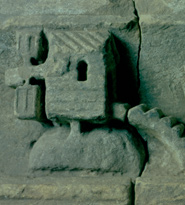 |
 |
 |
 |
 |
 |
 |
|
Fountains Abbey: History
Fountains Abbey: Buildings
|
Mills, fisheries and mineral rights (22/33) To exploit their environment to the maximum, Cistercian monks required a variety of holdings and rights including mills and fisheries, the right to mine and to dig turf as at Redley, which was the gift of a Nicholas de Bellun in the late twelfth century.(103) Another important resource was salt. This was vital for preserving food, but was also needed for the manufacture of cheese, the tanning of leather, the curing of shoes and the soldering of pipes. The monks did not mine salt but collected it through evaporation at salt pans.(104) |
